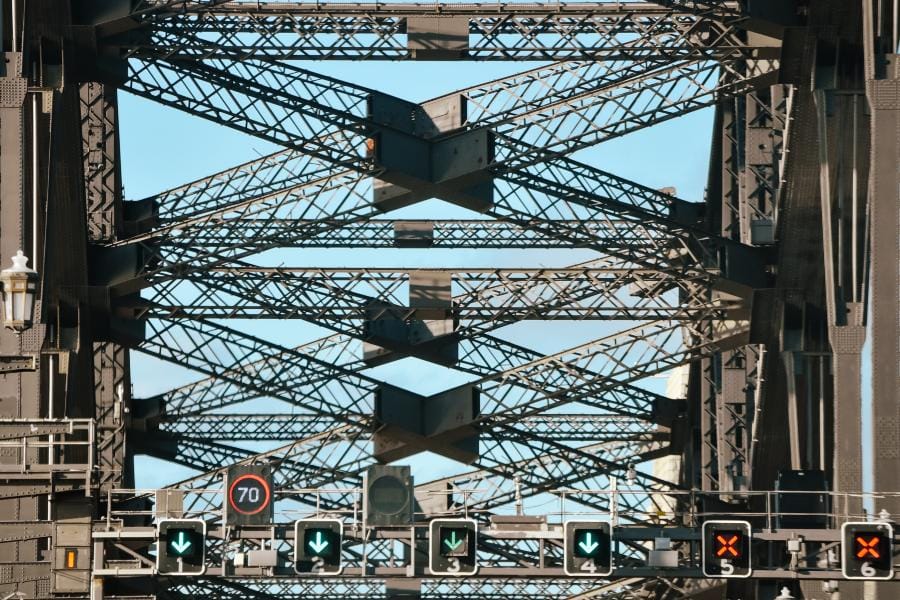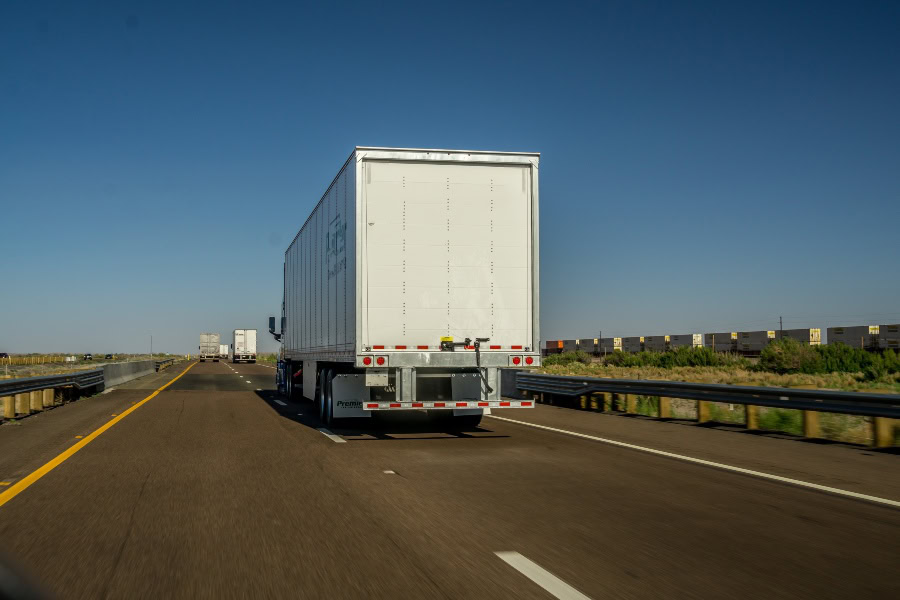Navigating Sydney Road Tolls: What Every Driver Should Know
Sydney’s extensive network of toll roads offers commuters and visitors efficient routes through the bustling metropolis. These Sydney toll roads form a ring around the most travelled parts of New South Wales, providing safe and convenient options for drivers. Understanding Sydney’s toll system is crucial for anyone planning to drive in the city, as it can significantly impact travel times and costs.
Motorists can choose from various payment methods, including E-Toll tags, Roam e-TAGs, and Transurban Linkt tags. For those without a tag, pass options are available to cover tolls for short-term use. The Sydney Motorways Toll Calculator, accessible online, allows drivers to estimate costs for specific routes by selecting entry and exit points on a map or from drop-down lists.
Vehicle classification plays a role in toll pricing, with roads generally categorised into Class A and Class B based on vehicle dimensions. Motorcyclists are also required to pay tolls but may benefit from setting up a rider toll account for streamlined payment. Some roads, like the Sydney Harbour Bridge and Tunnel, offer reduced tolls for quarterly account holders.
This comprehensive guide will break down everything you need to know about Sydney’s toll roads, helping you plan your move and your daily commutes with confidence.
Understanding Sydney’s Toll Road Network
The Basics of Sydney’s Toll Notice & System
Sydney boasts one of the most extensive toll road networks in Australia, reflecting the city’s sprawling nature and the need for efficient transportation infrastructure. Toll roads in Sydney are major highways, tunnels, and bridges that require drivers to pay tolls for usage. These roads are typically privately operated under agreements with the government, with toll fees funding their construction, maintenance, and operation.
The primary purpose of toll roads is to provide faster, more direct routes between key areas of the city, bypassing congested surface streets and reducing travel times. For many Sydneysiders, the time saved on toll roads often justifies the cost, especially during peak hours.
Sydney’s toll system is entirely cashless and electronic, utilising two primary methods for toll collection:
- E-Tag or E-Toll: Small electronic devices placed on the vehicle’s windshield that automatically register when passing through toll points.
- License Plate Recognition: Cameras capture the vehicle’s number plate, and the registered owner is billed later.
This electronic system ensures smooth traffic flow, eliminating the need for traditional toll booths and reducing congestion at toll points.
Smooth Moves Beyond the Tolls
Ready to tackle your Sydney move? Our local removalists know every shortcut in town. Get a quote today, and let’s navigate your move together – 02 7201 9367
How to Pay for Sydney Toll Roads?
Electronic Payment Options
To use Sydney’s toll roads efficiently, you’ll need to choose a payment method that suits your needs. Here are the main options available:
- E-tag Account: Best for frequent users. Requires an electronic tag in your vehicle. Tolls are automatically deducted from a linked account. Often offers discounts or capped charges for frequent users.
- Tag-less Account: Suitable for regular users who don’t want to install a tag. Linked to your license plate. Slightly higher fees than e-tag accounts due to video processing costs.
- Pass Products: You can purchase it for specific time periods (e.g., 30 days). No need for an account or e-tag.
- Pay Later Option: For occasional use without an account. Must pay within 3 days of travel to avoid additional fees. It can be done online or at certain service stations.
When setting up your preferred payment method, consider your expected frequency of toll road use and choose the option that offers the best value for your situation. Be aware that failure to pay may result in a toll notice with an additional admin fee.
Sydney’s Major Toll Roads: What You Need to Know

- M2 Hills Motorway
- M5 South-West Motorway
- M4 Western Motorway
- M7 Westlink
- Lane Cove Tunnel
- Sydney Harbour Bridge & Sydney Harbour Tunnel
- Eastern Distributor
- Cross City Tunnel
- WestConnex (M4–M8 and M8)
- NorthConnex
1. M2 Hills Motorway
The M2 Hills Motorway is a crucial link for those living in or moving to Sydney’s north-western suburbs. Spanning 21 kilometres from Baulkham Hills to North Ryde, this motorway significantly reduces travel time to the CBD and other parts of Sydney.
Key features:
- Connects to the Lane Cove Tunnel and Gore Hill Freeway
- Multiple entry and exit points along its route
- Variable toll charges based on the section used
For those relocating to areas like Castle Hill, Baulkham Hills, or Pennant Hills, the M2 will likely become a regular part of your commute.
2. M5 South-West Motorway
The M5 South-West Motorway is a vital artery connecting Sydney’s south-western suburbs with the airport and CBD. This 22-kilometre motorway runs from Beverly Hills to Prestons, offering a much faster alternative to congested local roads.
Key features:
- Connects to the M5 East and the WestConnex network
- Offers direct access to Sydney Airport
- Includes the M5 East tunnels, bypassing busy surface roads
If you’re moving to areas like Liverpool, Campbelltown, or Bankstown, the M5 will be an essential route for your travels into the city or to the airport.
3. M4 Western Motorway
The M4 Western Motorway is a major east-west connection, running from Concord in Sydney’s inner west towards the western suburbs. Recently integrated into the WestConnex project, the M4 now includes new tunnelled sections that bypass heavily congested areas.
Key features:
- Connects Western Sydney to the inner city
- New tunnel section from Homebush to Haberfield
- Links to the M7 Westlink in the west
For those relocating to areas like Parramatta, Blacktown, or Penrith, the M4 will likely be a key part of your daily commute.
4. M7 Westlink
The M7 Westlink forms a crucial part of Sydney’s orbital motorway network, connecting the M5 South-West Motorway with the M4 and other major roads. This 40-kilometre motorway runs from Prestons in the south to Baulkham Hills in the north.
Key features:
- Bypasses up to 48 sets of traffic lights
- Uses distance-based tolling
- Connects to the M2, M4, and M5 motorways
If you’re moving to areas in Sydney’s West or North West, such as Blacktown, Penrith, or Kellyville, the M7 will provide faster access to other parts of the city.
5. Lane Cove Tunnel
The Lane Cove Tunnel is a 3.6-kilometre twin-tunnel motorway link connecting the M2 Motorway at North Ryde with the Gore Hill Freeway at Artarmon. It’s a crucial part of Sydney’s orbital motorway network, offering a faster alternative to the heavily congested Epping Road.
Key features:
- Bypasses 26 sets of traffic lights
- Reduces travel time between North Ryde and Artarmon
- Connects seamlessly with the M2 and Gore Hill Freeway
For those moving to areas like Macquarie Park, Chatswood, or Lane Cove, this tunnel will likely become a regular part of your commute, especially if you’re heading to the CBD or North Sydney.
6. Sydney Harbour Bridge & Sydney Harbour Tunnel
These iconic crossings are the primary links between Sydney’s CBD and the North Shore. Both the Sydney Harbour Bridge and the Sydney Harbour Tunnel charge tolls for southbound traffic (towards the city).
Key features:
- Tolls apply only when travelling southbound
- The Sydney Harbour Tunnel offers an alternative to bridge congestion
- Both connect to the Cahill Expressway and Eastern Distributor
If you’re relocating to areas north of the harbour, such as North Sydney, Mosman, or Manly, you’ll likely use one of these crossings regularly when heading into the city.
7. Eastern Distributor
The Eastern Distributor is a 6-kilometer motorway connecting Sydney’s CBD with the airport and southern suburbs. It includes a 1.7-kilometre tunnel running underneath South Dowling Street.
Key features:
- Provides a direct route from the CBD to Sydney Airport
- Connects with the Cross City Tunnel and Sydney Harbour Tunnel
- Offers significant time savings compared to surface streets
For those moving to areas in Sydney’s east or inner south, like Surry Hills, Randwick, or Mascot, the Eastern Distributor can provide quick access to the CBD and other parts of the city.
8. Cross City Tunnel
The Cross City Tunnel is a 2.1-kilometre twin-tunnel tollway running east-west underneath Sydney’s CBD. It connects the Western Distributor at Darling Harbour to New South Head Road at Rushcutters Bay.
Key features:
- Bypasses 18 sets of traffic lights
- Reduces east-west travel time across the CBD
- Connects with the Eastern Distributor and other major roads
If you’re relocating to areas east of the CBD, such as Kings Cross, Paddington, or Bondi, the Cross City Tunnel can offer a faster route through the city, especially during peak hours.
Cross-City Expertise at Your Service
Moving interstate? Our removalists Sydney are toll-savvy pros. Book us now – 02 7201 9367
9. WestConnex (M4–M8 and M8)
WestConnex is Sydney’s largest road infrastructure project, designed to ease congestion, create faster and safer travel, and connect communities. It includes new and upgraded sections of the M4 and M8 motorways.
Key features:
- M4 East: Extends the M4 from Homebush to Haberfield
- New M5 (M8): Twin tunnels from Kingsgrove to St Peters
- M4-M5 Link: Connects the new M4 at Haberfield to the new M5 at St Peter’s
For those moving to areas in Sydney’s Inner West or South-West, such as Ashfield, Marrickville, or Kingsgrove, WestConnex will provide faster connections to other parts of the city.
10. NorthConnex
NorthConnex is a 9-kilometre tunnel linking the M1 Pacific Motorway at Wahroonga to the Hills M2 Motorway at West Pennant Hills. It’s designed to alleviate congestion on Pennant Hills Road and provide a faster link between Sydney’s north and north-west.
Key features:
- Bypasses 21 sets of traffic lights on Pennant Hills Road
- Reduces travel time between the Central Coast/Newcastle and Sydney’s CBD
- Connects seamlessly with the M2 Hills Motorway
If you’re relocating to Sydney’s upper north shore or north-west, such as Hornsby, Berowra, or Castle Hill, NorthConnex can significantly reduce your travel time to other parts of Sydney.
Planning Your Move: Toll Road Considerations
Mapping Your Route

When planning your move across Sydney, considering toll roads in your route can potentially save you significant time and stress. Here are some tips to help you plan effectively:
- Use Online Mapping Tools: Google Maps and Apple Maps both show toll roads in their directions. Enable the ‘avoid tolls’ option to compare routes with and without tolls.
- Check the Toll Road Website: Most toll road operators have their own websites with detailed maps. These often include real-time traffic information.
- Use Toll Calculators: Many toll road operators offer online calculators to estimate your toll costs. Input your entry and exit points to get an accurate estimate.
- Consider Time of Day: Toll roads can offer significant time savings during peak hours. Outside of peak times, non-toll alternatives might be just as quick.
- Factor in Vehicle Size: Larger vehicles often incur higher toll charges. Make sure to account for this if you’re driving a moving truck.
Remember, the quickest route isn’t always the cheapest. Weigh the time savings against the toll costs to decide the best option for your move. Generally, toll prices are updated in July, January, October, and December, so be sure to check for the most current rates.
Cost-Benefit Analysis: When to Use Toll Roads
Time Savings vs. Toll Expenses
Deciding whether to use toll roads involves balancing time savings against the financial cost. Here’s how to approach this decision:
- Calculate Time Savings: Use mapping tools to compare travel times with and without tolls. Factor in typical congestion times if moving during peak hours.
- Estimate Toll Costs: Use toll calculators provided by road operators. Remember that costs can vary based on vehicle type and time of day.
- Value Your Time: Consider how much your time is worth. Factor in any deadlines (e.g., meeting your removalist at a specific time).
- Consider Stress Levels: Toll roads often offer a less stressful driving experience. This can be particularly valuable when moving, which is already a stressful time.
- Think Long-Term: If you’ll be making the same journey regularly after moving, factor in the ongoing costs and benefits.
- Look for Deals and Caps: Some toll operators offer daily caps or discounts for frequent users. These can make toll roads more cost-effective for regular use.
Example Calculation
Let’s say a toll road saves you 30 minutes on your moving day and costs $15. If you value your time at $30 per hour, the toll road would be worth it ($15 < $15 worth of time saved). However, if it only saves 10 minutes, it might not be worth the cost ($15 > $5 worth of time saved).
Remember, the value proposition of toll roads can change based on the day and time. During peak hours, the time savings are often more significant, potentially justifying higher toll costs.
Tips for New Sydney Residents
Getting Set Up with Toll Payments
If you’re new to Sydney, setting up for toll payments should be one of your priorities. Here’s a step-by-step guide:
- Choose a Toll Provider: The main providers in Sydney or NSW are Linkt (formerly Roam) and E-way. Compare their offerings to see which suits your needs best.
- Decide on an Account Type: E-tag account: Best for frequent toll road users. Tagless account: Good for regular users who don’t want a tag. Pass: Ideal for infrequent users or visitors.
- Set Up Your Account: This can usually be done online, over the phone, or at a service centre. You’ll need your vehicle details and payment information.
- Install Your E-tag (if applicable): Follow the provider’s instructions for correct placement. Incorrect placement can result in missed tolls and fines.
- Link Multiple Vehicles: If you have more than one vehicle, you can usually link them to the same account.
- Set Up Auto Top-Up: This ensures you always have credit for tolls. Helps avoid missed toll fees and fines.
- Download the App: Most providers have smartphone apps for easy account management. These often include real-time toll road information and trip calculators.
- Understand Billing Cycles: Know when and how often you’ll be billed. Check your statements regularly to track your toll road usage.
- Keep Your Details Updated: Ensure your vehicle and contact details are always current. This helps avoid issues with toll notices and fines.
- Learn About Customer Service Options: Know how to contact your provider if you have issues or questions. Some providers offer online chat, phone support, and service centres.
Remember, even if you don’t plan to use toll roads regularly, it’s wise to have an account or pass set up. This covers you for any occasional use and helps avoid the hassle of paying individual tolls or risking fines.
Future Developments in Sydney’s Toll Road Network
Upcoming Projects and Expansions
Sydney’s road network is continually evolving to meet the needs of the growing city. Here are some key developments to be aware of:
- Western Harbour Tunnel and Beaches Link: Will provide an alternative harbour crossing. Aims to reduce congestion on the Sydney Harbour Bridge and in the Eastern Distributor.
- M6 Stage 1: Will connect President Avenue, Kogarah to the WestConnex M8 at Arncliffe. Designed to ease congestion in Sydney’s south.
- Sydney Gateway: Will provide a new route from St Peters Interchange to Sydney Airport and Port Botany. Aims to reduce airport traffic on local roads.
- M12 Motorway: Will provide direct access to the new Western Sydney Airport. Will connect to the M7 and The Northern Road.
- Expansion of Smart Motorways: Implementation of intelligent transport systems on existing motorways. Aims to improve traffic flow and reduce incidents.
These future developments may impact your decision on where to live or how to commute. Keep them in mind when planning long-term, especially if you’re buying property or establishing a business. Watch for a new sign and a ramp as these projects progress.
Pack, Move, and Save
Worried about toll costs on top of moving expenses? Our packing services can help you save. Contact us for budget-friendly moving solutions – 02 7201 9367
Master Sydney Toll Roads: Your Key to Seamless Moving

Understanding Sydney’s toll road network is crucial for anyone moving to or within the city. While the system may seem complex at first, it’s designed to make travel across this sprawling metropolis more efficient and less stressful. By familiarising yourself with Sydney’s toll roads, you’re setting yourself up for smoother, more efficient travel around the city.
Whether you’re moving across town or just across the harbour, understanding these roads will help you navigate your new home with confidence. Remember, while toll roads might seem costly, they often save you time and money in the long run. Whether you’re from Melbourne or elsewhere, you’ll soon find that Sydney’s toll road system, while extensive, is designed to make your life easier.
An e-tag account can cover most of your toll road needs, ensuring you’re ready to carry on with your day without worrying about missed payments or fines. As you settle into your new home, keep this guide handy. It’s more than just a page of information; it’s your key to efficiently navigating Sydney’s extensive road network.
With time, you’ll find that the toll road system, while extensive, is designed to make your life easier and your travels quicker across this beautiful city.








